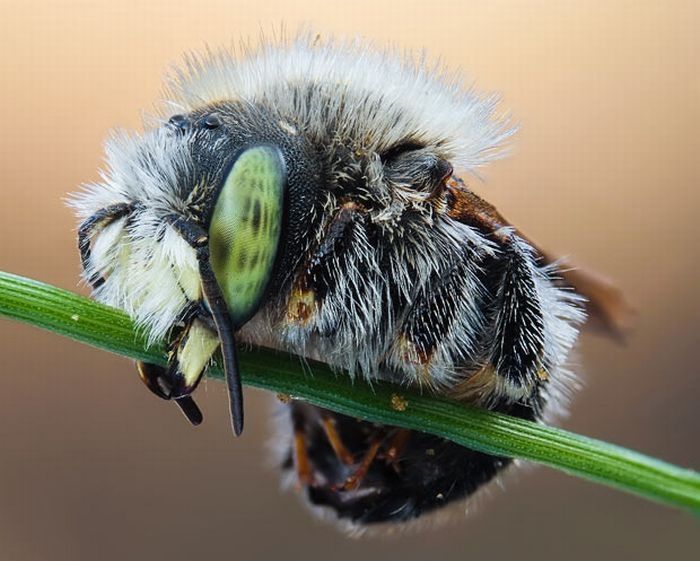|
|
Insect Macro Photography
|
The higher-level phylogeny of the arthropods continues to be a matter of debate and research. In 2008, researchers at Tufts University uncovered what they believe is the world's oldest known full-body impression of a primitive flying insect, a 300 million-year-old specimen from the Carboniferous Period. The oldest definitive insect fossil is the Devonian Rhyniognatha hirsti, from the 396 million year old Rhynie chert. It may have superficially resembled a modern-day silverfish insect. This species already possessed dicondylic mandibles (two articulations in the mandible), a feature associated with winged insects, suggesting that wings may already have evolved at this time. Thus, the first insects probably appeared earlier, in the Silurian period.
There have been four super radiations of insects: beetles (evolved ~300 million years ago), flies (evolved ~250 million years ago), moths and wasps (evolved ~150 million years ago). These four groups account for the majority of described species. The flies and moths along with the fleas evolved from the Mecoptera.
The origins of insect flight remain obscure, since the earliest winged insects currently known appear to have been capable fliers. Some extinct insects had an additional pair of winglets attaching to the first segment of the thorax, for a total of three pairs. As of 2009, there is no evidence that suggests that the insects were a particularly successful group of animals before they evolved to have wings.
Late Carboniferous and Early Permian insect orders include both extant groups and a number of Paleozoic species, now extinct. During this era, some giant dragonfly-like forms reached wingspans of 55 to 70 cm (22 to 28 in) making them far larger than any living insect. This gigantism may have been due to higher atmospheric oxygen levels that allowed increased respiratory efficiency relative to today. The lack of flying vertebrates could have been another factor. Most extinct orders of insects developed during the Permian period that began around 270 million years ago. Many of the early groups became extinct during the Permian-Triassic extinction event, the largest mass extinction in the history of the Earth, around 252 million years ago.
|
|









